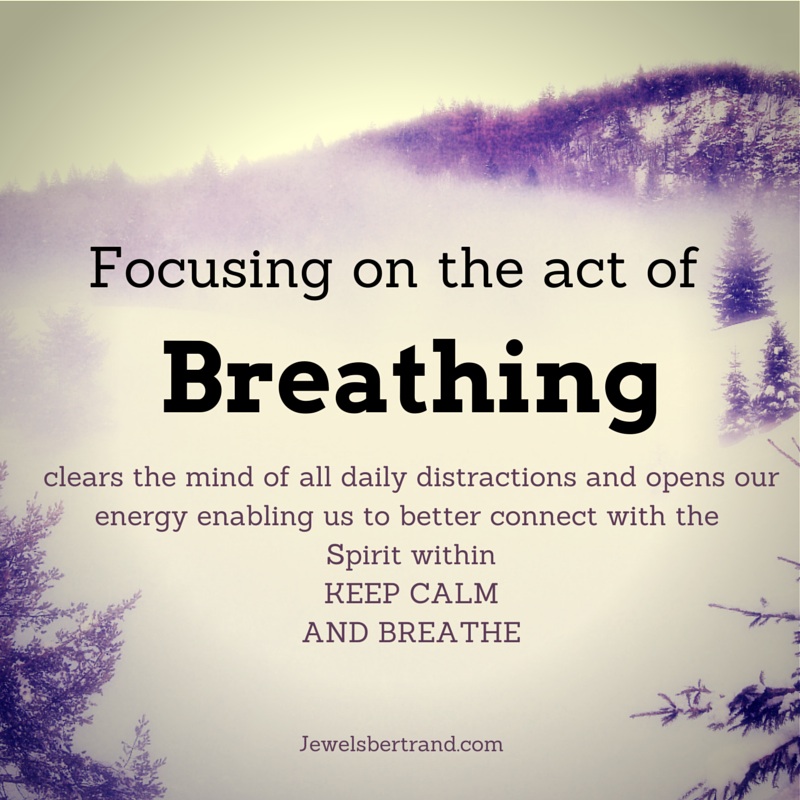But practice, practice, practice. And then practice a little bit more.
Negative emotions can feel like such a gangster at times, it can be hard to believe that something as simple and as normal as breathing can out-muscle it – but it can. Here’s why. Strong, deep breathing initiates the relaxation response. The relaxation response was discovered by a Harvard cardiologist to be an automatic response that can neutralize the surge of neurochemicals that cause the awful physical feelings of an issue such as anxiety. Because it’s an automatic response, you don’t need to believe it works, it just will – but you do have to initiate it.
Breathing is the switch that will activate the relaxation response and start to put the symptoms of anxiety back to small enough. Once you start slow deep breathing, your body will take over and do the rest. Breathe in through your nose for 3, hold for 1 and then out through your mouth for 3. (If you’re the type who quite fancies a visual, imagine holding a cup of hot cocoa and smelling the warm, heady aroma for three, hold your breath for one, then blow it cool for three.) Make sure the breathing is going right into your belly, not just into your chest.
In the thick of these negative emotions, the brain is too busy with other things to remember to do strong deep breathing. To make strong deep breathing easier for your brain to access, practice it a couple of times a day when you’re calm.
Breathing Exercises
Breathing — you do it all the time without thinking — and that’s a good thing. But you may be surprised to hear that you may not be doing it right. Here’s what you need to know — and do.
You know that breathing is essential for life. It’s how you get oxygen into your bloodstream, which then delivers this precious cargo to the rest of your body. Breathe out, and you get rid of waste gases such as carbon dioxide.
While thankfully we don’t have to think about breathing in order to do it, by fine-tuning how we breathe we may enjoy a number of health benefits.
Bad breath, good breath
As automatic as it is, many people may not be breathing very well. Tension, poor posture or ill-fitting clothing cause many of us to take very shallow breaths.
You can tell when you’re breathing shallowly because you can see or feel your ribcage moving out as you inhale. If that’s the case, then you’re breathing with the muscles in between your ribs instead of with your diaphragm, the powerful muscle at the bottom of your chest cavity that pulls air down. You may even be taking in so little air that your chest barely moves at all.
How to breathe deeply
How many times have you heard the expressions “take a deep breath” and “breathe through your diaphragm”? If you’re not really su
re how to, try this exercise:
- Start by lying on the floor on your back. (This will make it easier to develop the proper deep breathing technique the first couple of times.)
- Place one hand on your upper chest and the other on your belly just above your waist.
- Breathe in slowly through your nose. You should feel the hand on your belly rise.
- Breathe out slowly through your mouth. The hand on your belly should gradually lower.
- Repeat steps 3 and 4 a few times, then focus on allowing your ribcage to expand and widen as your belly moves out, so that you are filling up your entire lungs, from bottom to top.
Breathing easy for the better
You don’t need to breathe like this all the time. But taking a few deep breaths periodically throughout the day helps you absorb more oxygen. And more oxygen means your body can work better — and you’ll feel better both mentally and physically.
Practicing correct breathing is also a good way to simply cope with everyday life:
- Increase your energy after a tiring day at the office
- Be more alert even without a caffeine fix
- Focus better when everything seems to be happening at once

- Improve blood circulation so that your bones and muscles get more nutrients
- Reduce your symptoms of stress, especially when you feel like your heart is racing a mile a minute
- Relieve pain — like after stubbing your toe
Take a big deep breath
There are many ways that you can incorporate deep breathing into your routine for better overall health.
- Pilates uses deep breathing through the diaphragm to aid the exercises.
- Yoga practice often incorporates breathing techniques called pranayama (breath control), in the belief that this can help control body and mind.
- Meditation focuses on observing the breath.
- Aerobic exercise in which you become slightly out of breath can challenge and enhance your lung capacity and efficiency.
- Vocal training and playing a wind instrument require good breathing techniques in order to enhance the quality of the music.
With all of its benefits, and the fact that it’s easy to do once you know how, consider proper deep breathing your portable fix-it tool.

